Since birds tend to spend most of their time in the air and fish live underwater, you’d think the two groups would rarely interact. But actually, there are tons of birds that eat fish, and for most of them fish actually make up nearly their entire diet. In fact, some of the most common and easily recognizable birds in the world have a high fish diet. In this article we will look at some of the best known examples of birds that eat fish.
13 Birds that Eat Fish
1. Osprey
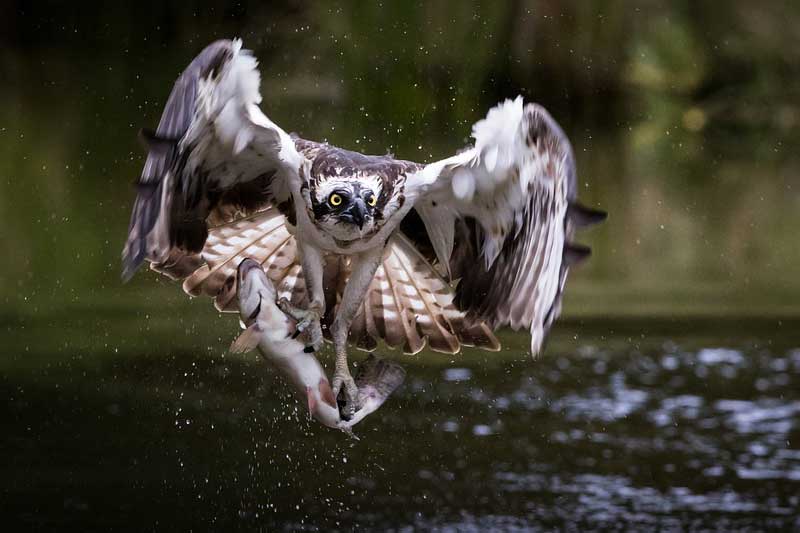
Scientific name: Pandion haliaetus
The Osprey is a unique bird of prey. It’s not considered a hawk, eagle, falcon, or owl. Instead, it has its own genus, even though one of its common names is “fish hawk.” Only the peregrine falcon is more widely distributed across the globe than the Osprey.
Ospreys are large birds, with a nearly six-foot wingspan. Their back and the upper sides of their wings and tail are deep brown, and its underside is white with occasional brown stripes on its breast. The head is white with a dark mask across their bright yellow eyes. 99% of their diet consists of fish, which they catch by diving feet-first into the water, often completely submerging themselves.
2. Bald Eagle
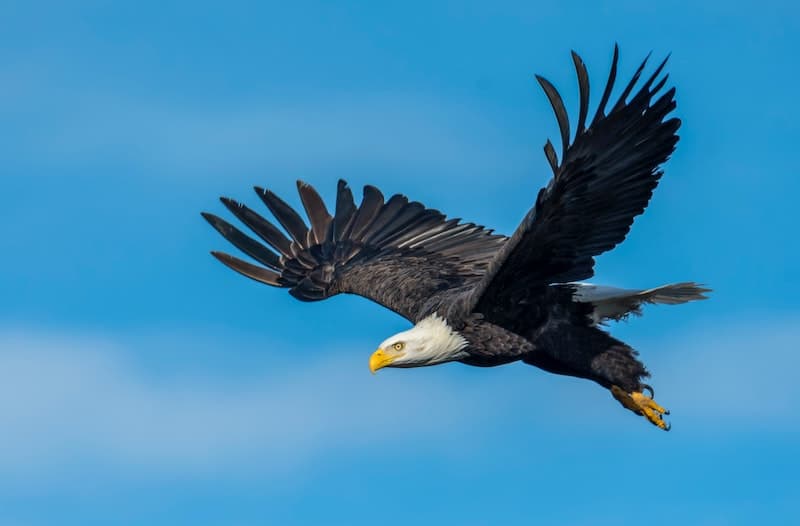
Scientific name: Haliaeetus leucocephalus
America’s national symbol is a bald eagle, one of a group of eagle species that gravitate to the coasts and large bodies of inland water, where fish are their main prey. These distinctive birds have white heads and dark brown bodies, with yellow beaks and feet. They construct the largest nests of any known bird, often exceeding ten feet across. Its wingspan can exceed 7 feet and mature females weigh nearly 14 pounds.
These eagles range from Alaska to Mexico, and some populations are migratory. Throughout their range, they eat mostly fish, although they’re opportunistic predators and will eat small rodents, lizards, birds and even carrion.
3. Stellar’s Sea Eagle
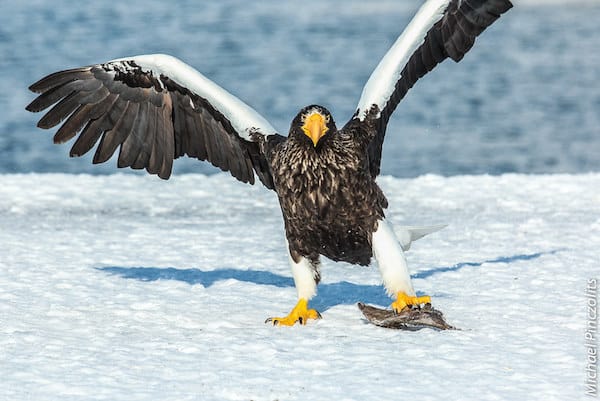
Scientific name: Haliaeetus pelagicus
Native to northeastern Asia, and with an especially large population on the Kamchatka Peninsula, the Stellar’s Sea Eagle is in many ways the western Pacific equivalent of the Bald Eagle. It’s a large (8 foot wingspan) sea eagle that eats mainly fish and other birds.
It’s the heaviest eagle in the world, and is mostly a uniform dark brown with white patches on the leading edges of the wings, and a white tail.
Salmon and trout are some of their favorite prey, but they also frequently hunt seagulls and have even been recorded hunting immature seals.
4. Great Blue Heron
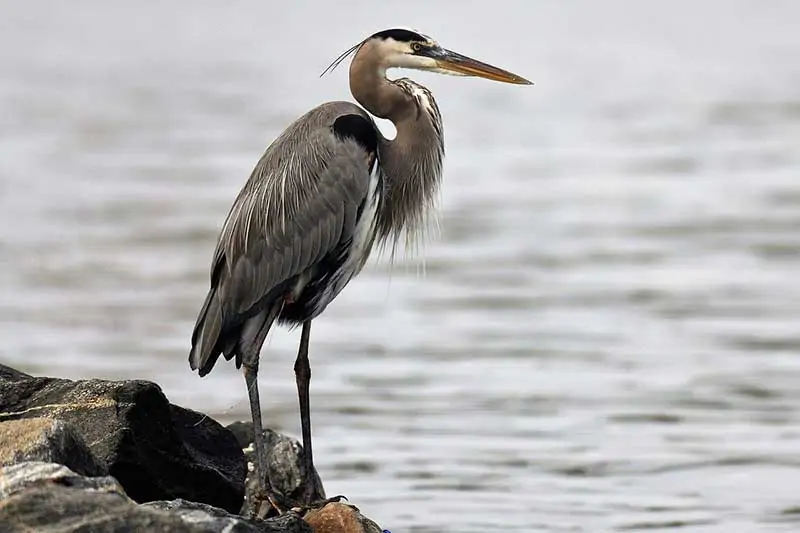
Scientific name: Ardea herodias
This well-known bird lives throughout most of North America, and will happily live anywhere there’s fish-holding water. They are the largest herons in North America and one of the largest heron species in the world, with only two other species growing larger.
Standing up to 4.5 feet tall with a wingspan of 6.5 feet, they’re truly a majestic sight.
While they’re opportunistic predators that will happily eat frogs, lizards, young birds, and even alligator hatchlings, most of their prey are small fish. They’ll live and hunt in both fresh and saltwater habitats.
5. Brown Pelican
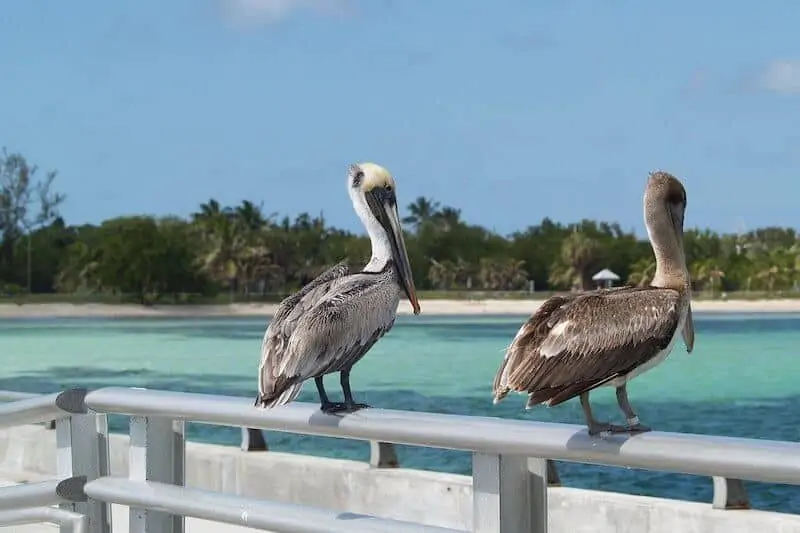
Scientific Name: Pelecanus occidentalis
This species lives on both the Atlantic and Pacific coasts of North and South America, and seems equally at home in both temperate and tropical areas. While it’s one of the largest seabirds in most of its range, it is still the smallest living species of pelican. Their wingspan is 7.6 feet and the heaviest adults weigh about 11 pounds, which is half the weight of the white pelicans that also inhabit the Americas.
Like all pelicans, it’s a fish-eater that uses its throat pouch to catch fish. Unlike other pelicans, which usually float on the surface and skim the water with their beaks, the brown pelican hunts by flying above the water and diving into schools of fish.
6. Atlantic Puffin
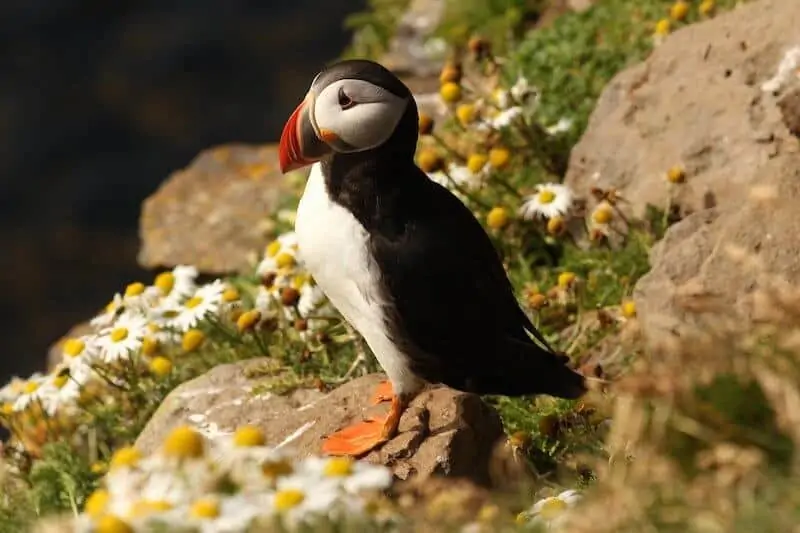
Scientific name: Fratercula arctica
With broad, brightly colored beaks, the black and white puffin is instantly recognizable. During the winter it ranges over much of the North Atlantic, but in the summer it retreats to Arctic islands to breed.
These are smallish birds with just a 25 inch wingspan and they spend much of their time in the water. During the winter when they’re out at sea, they’re solitary and hard to find. Almost all pictures of puffins that you’ll see are during the summer months, when they form large breeding colonies. Its diet consists almost exclusively of fish, and sand eels are an especially favored prey item.
7. Emperor Penguin
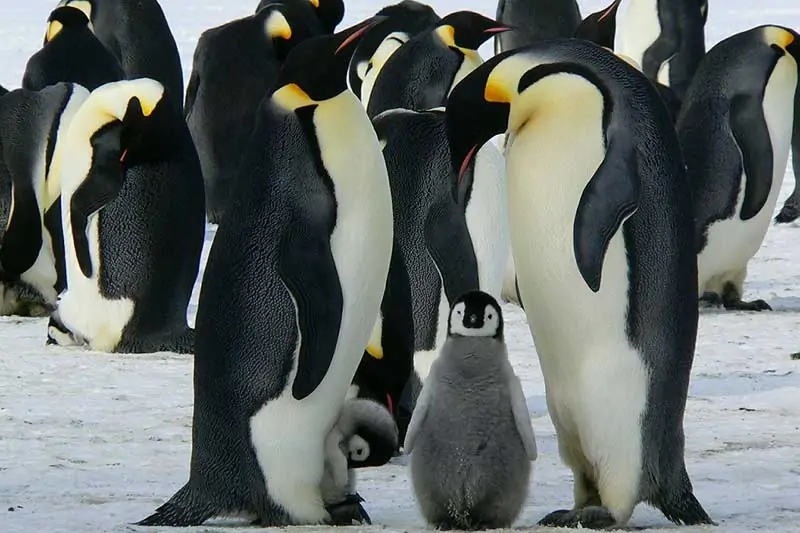
Scientific name: Aptenodytes forsteri
The largest and most recognizable of the penguins, emperor penguins can weigh up to 99 pounds. They’re the only penguin species to breed during the winter months, when they routinely walk up to 75 miles inland over the ice shelf to gather in breeding colonies that number in the thousands.
These birds can dive deep, often swimming down to over 1000 feet under the surface in their hunt for fish and squid. In the summer months, they spend almost all of their time at sea, foraging for fish. They are mainly found in Antarctica.
8. African Fish Eagle
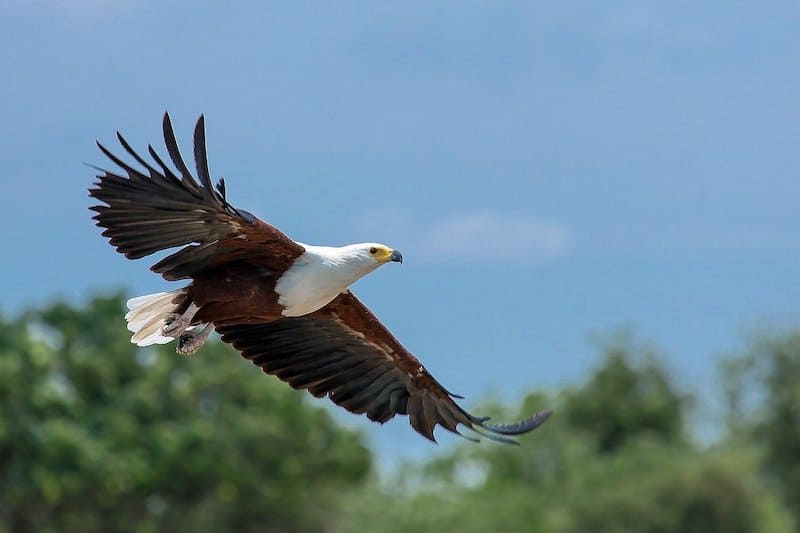
Scientific name: Haliaeetus vocifer
Much like the bald eagle, this bird has a dark brown body with a white head, although the white extends to cover the neck and much of the breast as well. It’s similar in size, too, with wingspans of 7-8 feet common in females.
While they’re occasionally found on the coasts, they have a strong preference for freshwater habitats, and are especially common around lakes and rivers. They live throughout sub-Saharan Africa, where it feeds almost exclusively on fish. It’s been known to catch fish more than ten times it’s own weight.
9. Common Kingfisher
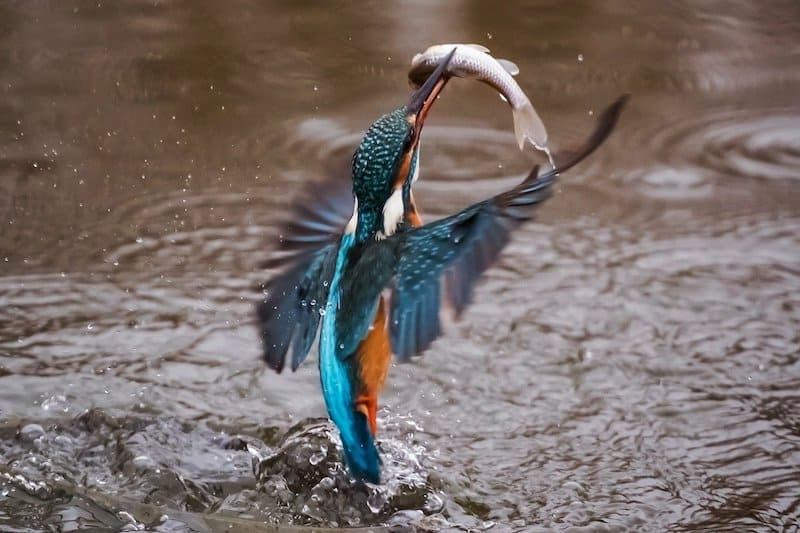
Scientific name: Alcedo atthis
Kingfishers are a large family of birds that inhabit every continent except Antarctica. The common kingfisher is native to Europe, Asia, and North Africa, where it can often be found perched on branches overhanging clear, slow moving streams and lakes.
From these perches, they dive into the water when they spot their prey, mainly small fish. It’s a small bird with a 10 inch wingspan, a bright blue back and a reddish-brown underside, with a long, narrow black bill.
10. Northern Gannet
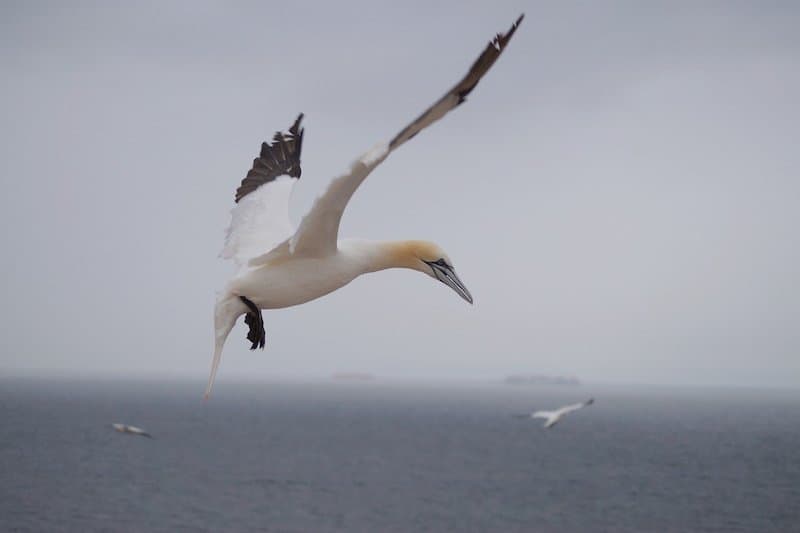
Scientific name: Morus bassanus
A large seabird native to the North Atlantic, the Mediterranean, the Gulf of Mexico and the Caribbean, the Northern Gannet is characteristic by it’s long conical bill, yellow tinted head, and long (6 foot wingspan) somewhat narrow wings.
Their body is streamlined to facilitate high speed dives into the water. When gannets spot a school of fish in the water below, they quickly fold in their wings and plunge rapidly into the water. Once underwater, they use the wings as paddles, similar to penguins, to propel themselves. They swallow the fish while still underwater.
11. Wandering Albatross
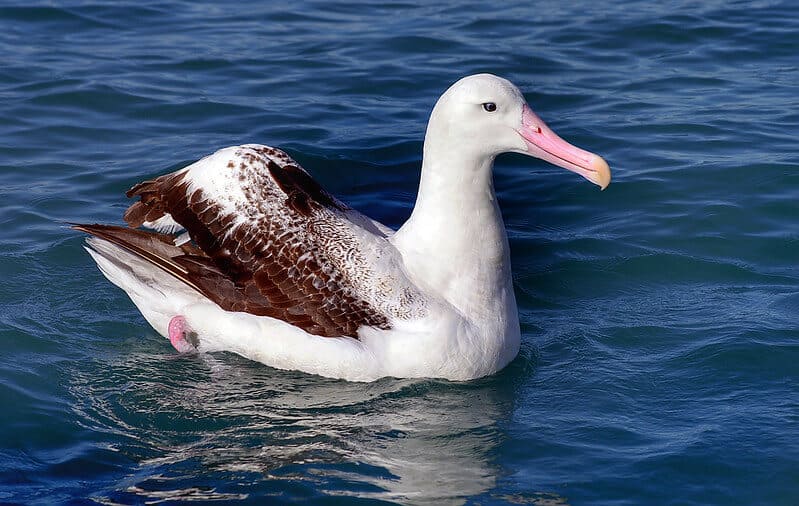
Scientific name: Diomedea exulans
Famous for having the largest wingspan of any living bird at nearly 12 feet, the wandering albatross is one of the largest birds in the world that is still capable of flight. It has a circumpolar range in the Southern Ocean. Adults have black wings and white bodies, while juveniles may be a uniform dark brown to black color.
These birds spend the vast majority of their life in the air, and they only land to breed and feed. They live primarily in the open ocean, or more accurately over the open ocean, since they rarely land.
They feed on small fish and squid caught at the water’s surface, and will eat so much in a single sitting that they’ve been known to make themselves too heavy to fly, so they float on the surface until they’ve digested and passed enough of their meal to fly again.
12. Great Cormorant
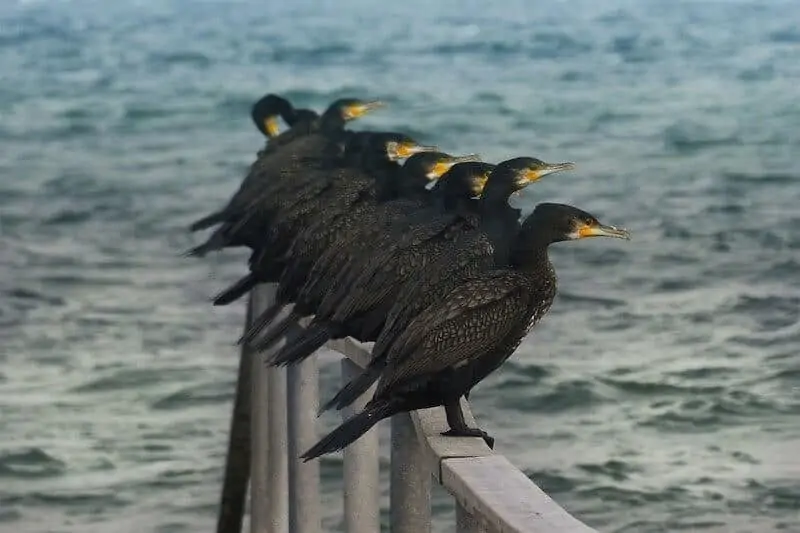
Scientific name: Phalacrocorax carbo
One of the most widespread cormorants, this species lives everywhere from the east coast of North America to sub-Saharan Africa to Australia and New Zealand. It’s a large, solid black bird that can weigh up to 12 pounds. They have a long, narrow bill with a slight hook at the end.
They dive and swim through the water to hunt their prey, resting on the surface between dives. They’ve been used in traditional fishing practices in some places for centuries; a rope is tied around their neck to prevent them from swallow the fish, and when they return to the boat with the fish in their mouth, the fisherman removes it and they dive again. When the days work is done the rope is removed and they’re given a portion of the catch to eat.
13. Common Murre
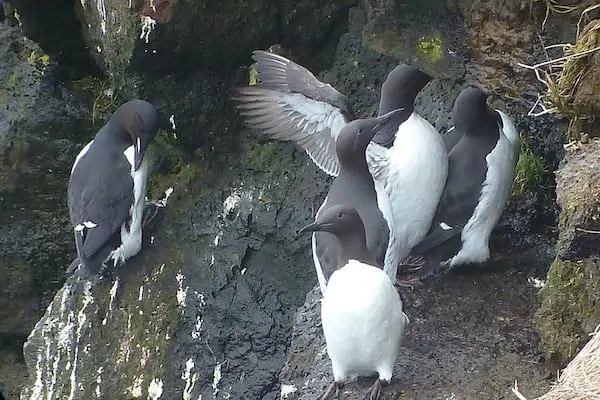
Scientific name: Uria aalge
Murres are common in both the north Atlantic and the north Pacific, where they often form enormous breeding colonies on rocky islands. While they do fly, they’re not particularly good at it. Underwater is where they really shine, and they swim with remarkably agility.
They feed almost entirely on small schooling fish like capelin and anchovies, which they pursue underwater in short dives. Murres have brown to black plumage on their backs and heads, with white underbellies and long, narrow bills.





